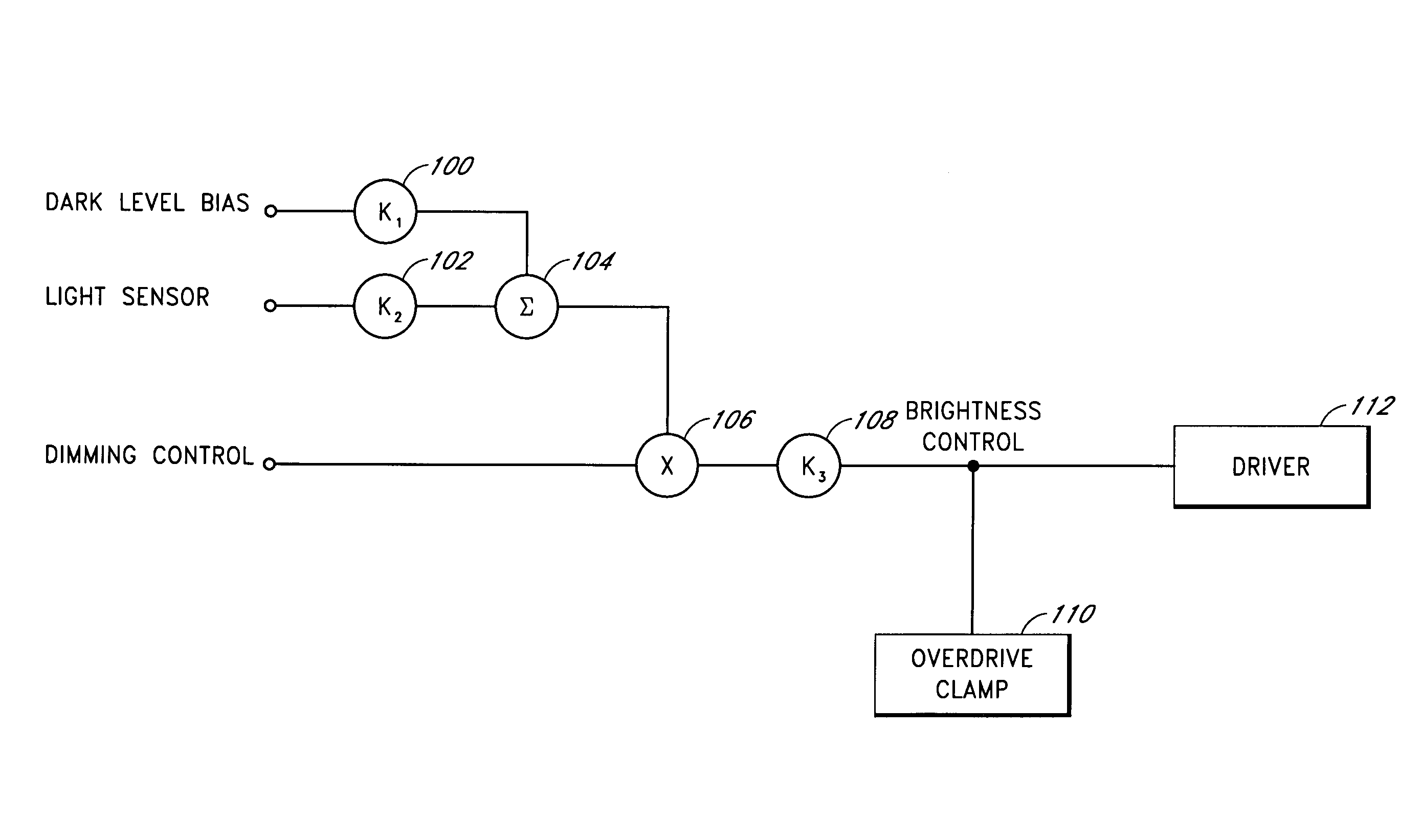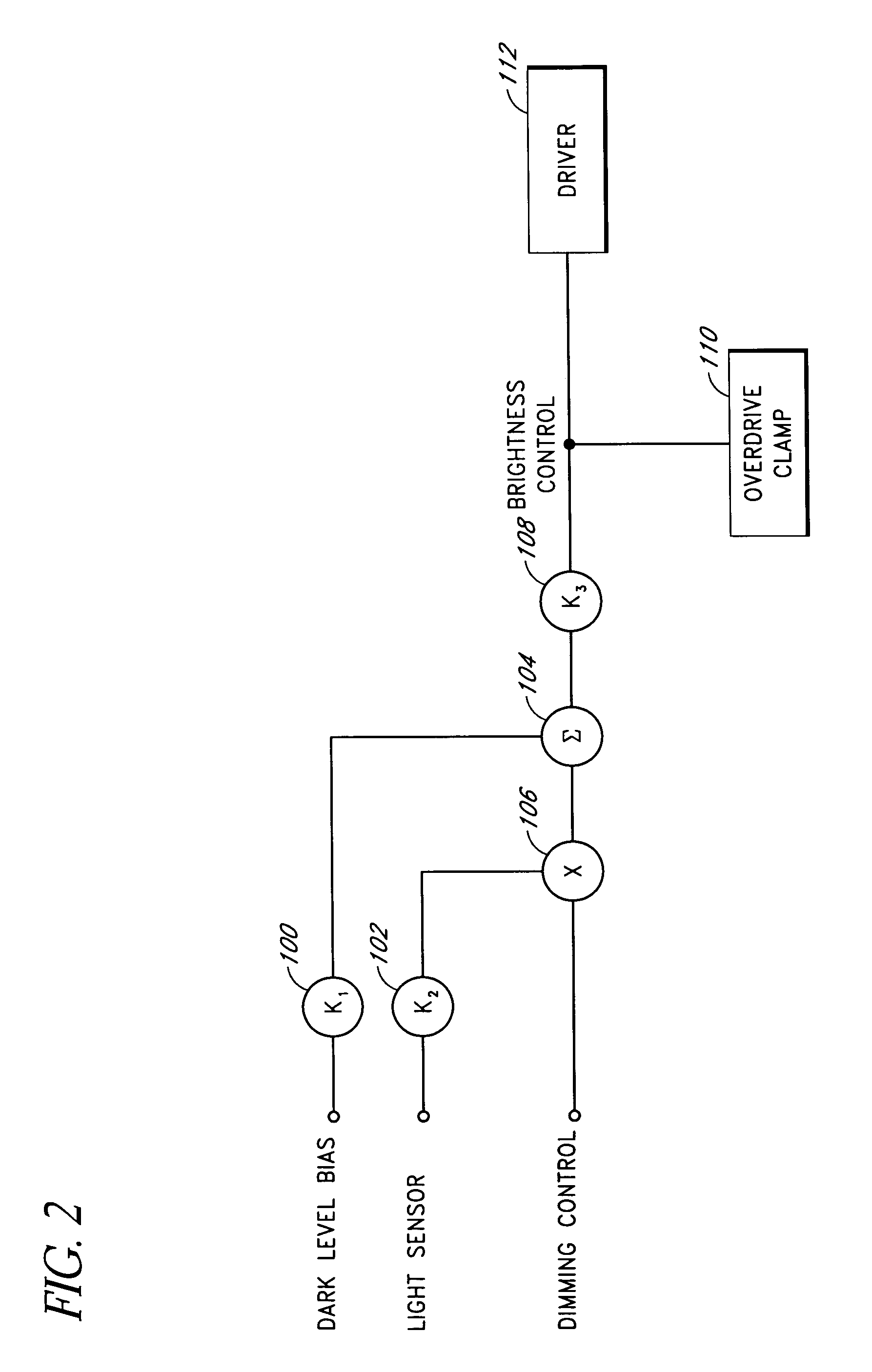Method and apparatus to control display brightness with ambient light correction
a technology of ambient light correction and display brightness, applied in the field of methods, can solve the problems of affecting the reading of the display, affecting the use of the display, and the long life of light sources between failures,
- Summary
- Abstract
- Description
- Claims
- Application Information
AI Technical Summary
Benefits of technology
Problems solved by technology
Method used
Image
Examples
Embodiment Construction
[0030]Embodiments of the present invention will be described hereinafter with reference to the drawings. FIG. 1 is a block diagram of one embodiment of a brightness control circuit with ambient light correction. A user input (DIMMING CONTROL) is multiplied by a sum of a dark level bias (DARK LEVEL BIAS) and a light sensor output (LIGHT SENSOR) to produce a brightness control signal (BRIGHTNESS CONTROL) for a display driver 112. In one configuration, the dark level bias and the light sensor output are adjusted by respective scalar circuits (k1, k2) 100, 102 before being added by a summing circuit 104. An output of the summing circuit 104 and the user input is provided to a multiplier circuit 106. An output of the multiplier circuit 106 can be adjusted by a third scalar circuit (k3) 108 to produce the brightness control signal. An overdrive clamp circuit 110 is coupled to the brightness control signal to limit its amplitude range at the input of the display driver 112.
[0031]The displa...
PUM
 Login to View More
Login to View More Abstract
Description
Claims
Application Information
 Login to View More
Login to View More - R&D
- Intellectual Property
- Life Sciences
- Materials
- Tech Scout
- Unparalleled Data Quality
- Higher Quality Content
- 60% Fewer Hallucinations
Browse by: Latest US Patents, China's latest patents, Technical Efficacy Thesaurus, Application Domain, Technology Topic, Popular Technical Reports.
© 2025 PatSnap. All rights reserved.Legal|Privacy policy|Modern Slavery Act Transparency Statement|Sitemap|About US| Contact US: help@patsnap.com



